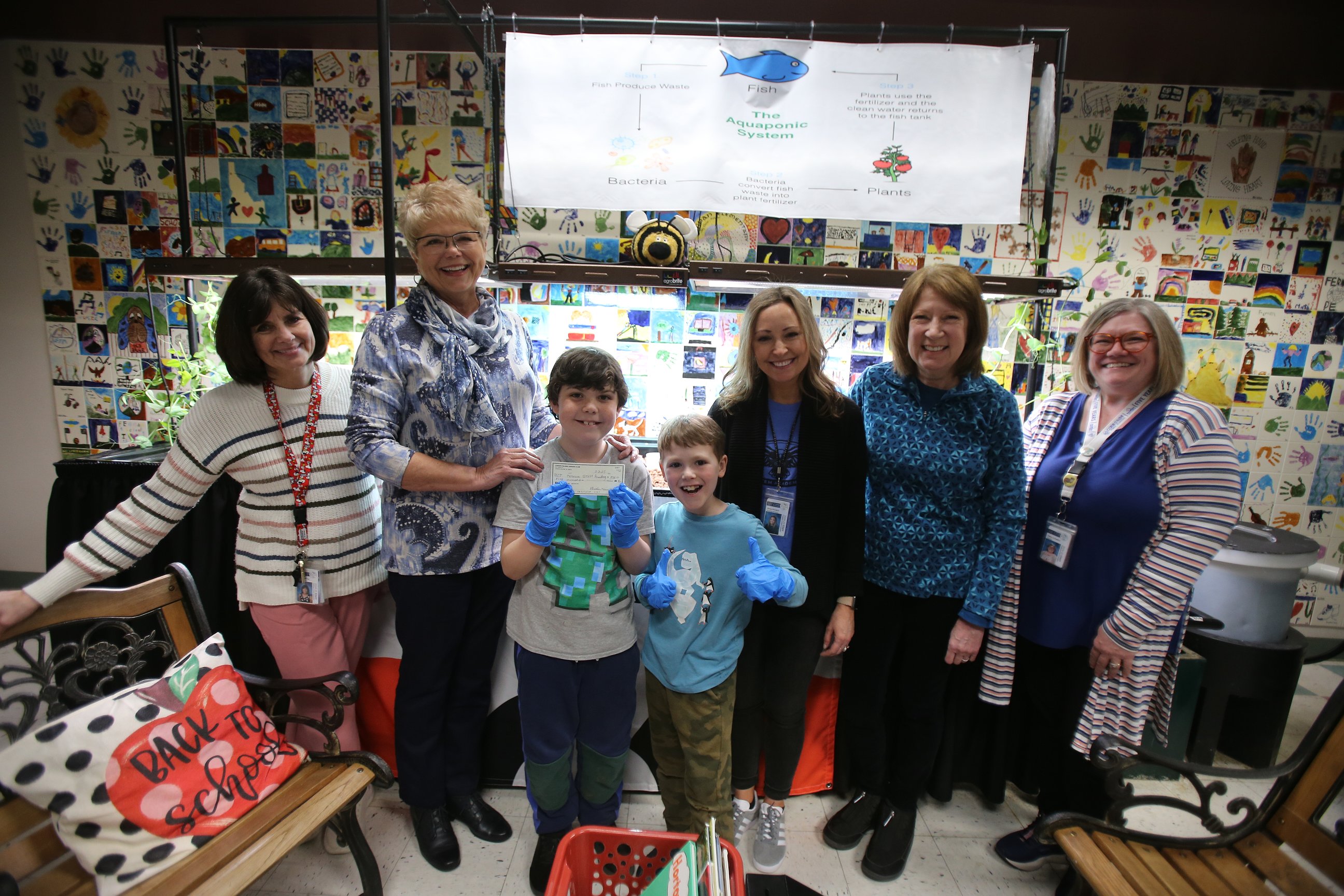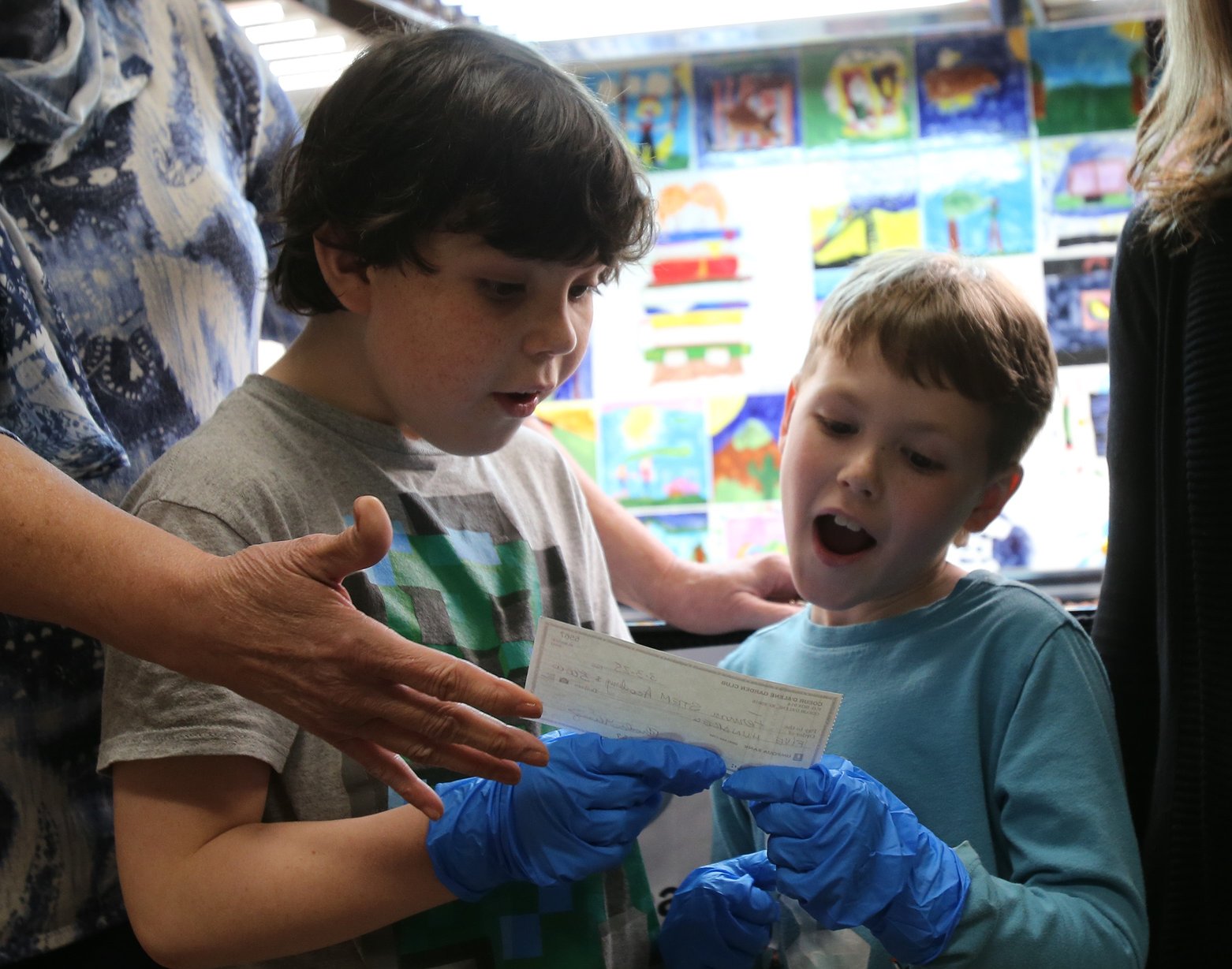Garden Club supports Fernan STEM Academy aquaponics with $500 grant
COEUR d'ALENE — Third graders Liam Lavine and Thomas Holom were anything but coy Tuesday as they explained how Fernan STEM Academy's aquaponics system works.
It all begins with the fish, what they eat and the organic waste they generate.
"It's kind of like fertilizer, and then it goes through here; there's a bunch of algae in here," Thomas said, pointing to the different compartments and pipes as water bubbled through the system just inside the school's front entrance.
"It gets filtered out and lets the nutrients pass through with the water," he said.
"Here we have lavender, lemon cucumbers and snap peas," Liam said.
"In our classroom we also have a hydroponic garden," he added.
Fernan students aren't the only ones excited about this science-based pond-to-table aquaponics gardening system. Members of the Coeur d'Alene Garden Club visited the school that afternoon to present Fernan and aquaponics adviser Betsy Kovatch with a grant check for $500 to support the program.
"That means we can grow cooler plants, like maybe a couple Venus flytraps," Liam said.
The school did not submit an application for the grant; members of the Garden Club reached out after they saw the need.
"I've actually always been curious what happens at Fernan," Coeur d'Alene Garden Club Community Projects Committee Co-Chair Cheryl Christensen said.
She said she and Coeur d'Alene Garden Club Community Projects Committee Chair Susan Davenport contacted Fernan for a tour of the school's gardening projects.
"They've got some very distinct areas, in fact, so many great ideas that we had to hone it down to one," Christensen said. "We thought, 'What better one to do than right here when you walk in?' The fascination is instant. If I was fascinated, I thought others would be, too."
She said one of the great things about the aquaponics program is the school's agreement with the nearby church to support the Christ the King Food Bank.
"The tomatoes and vegetables that are grown here are shared with the church," Christensen said. "For the school and the community, it's a win-win."
"The Garden Club wants to give back to the community, so that's one of the reasons we reached out to schools and specifically this school," Davenport said.
Kovatch said this support means a lot to Fernan.
"This aquaponics system is expensive — it's expensive to maintain, it's expensive to run," she said, adding that the special one-time use pods required for the pH balance are $50 per tray, and it takes several trays to start the growing process.
"It helps so much that we have community support to help us continue to purchase the items and keep everything running and maintained well," she said. "Once this garden is done and these fruits grow and we give them away, then we'll be able to start the next thing and it's an experiment with new things. What grows best? Vegetables, herbs or flowers? What do we want to grow? And the kids have input on that."
The aquaponics program provides education for students about where food comes from and how it grows.
"A lot of times, the kids put food in their mouth and they don't think about it, or they see things in the ground and think it grows without the effort of anything," Kovatch said. "This actually makes them consciously learn and think about each step that contributes to our plant life, whatever it is."
 Members of the Coeur d'Alene Garden Club visited Fernan STEM Academy on Tuesday to present the school with a $500 grant to support its aquaponics gardening program. From left: Assistant Principal Sandy Doering, Coeur d'Alene Garden Club Community Projects Committee Co-Chair Cheryl Christensen, third graders Liam Lavine and Thomas Holom, Fernan aquaponics adviser Betsy Kovatch, Garden Club Projects Committee Chair Susan Davenport and Principal Kathy Livingston.
Members of the Coeur d'Alene Garden Club visited Fernan STEM Academy on Tuesday to present the school with a $500 grant to support its aquaponics gardening program. From left: Assistant Principal Sandy Doering, Coeur d'Alene Garden Club Community Projects Committee Co-Chair Cheryl Christensen, third graders Liam Lavine and Thomas Holom, Fernan aquaponics adviser Betsy Kovatch, Garden Club Projects Committee Chair Susan Davenport and Principal Kathy Livingston.



